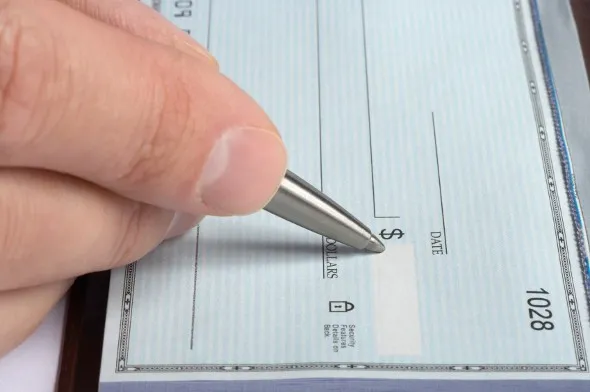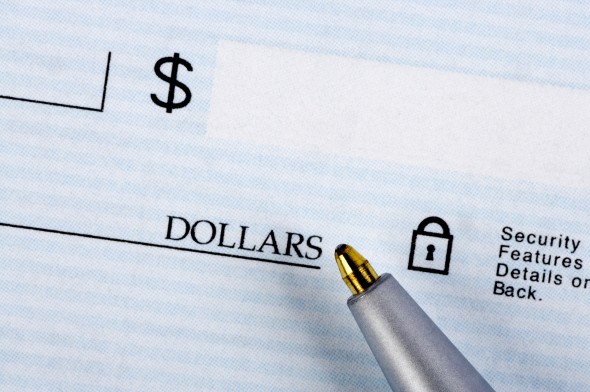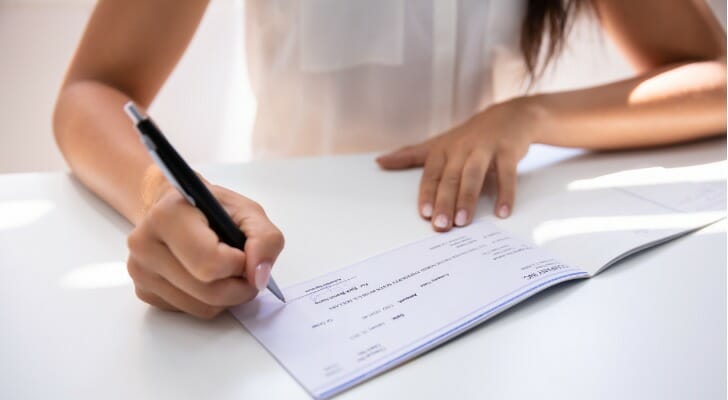

Writing checks isn’t as common as it used to be. Many of us rely on our credit cards, direct debit and cash to make the payments in our lives. For some people, a monthly rent check is the only check they ever write. But whether you’re setting up direct deposit, online bill pay or a money transfer account, you’ll still need to know where to find your account number and your bank’s routing number.
A routing number, or bank transit number, is a nine-digit number that helps banking or other financial institutions know where a financial document, such as a check, originated from. It identifies the bank that money will typically be flowing in or out of when a transaction is complete.
An account number is a unique number that identifies an individual or legal entity’s bank account. Every account number is unique at the financial institution, or routing number, that it is associated with. This ensures that every financial account in the world has a unique combination of routing and account numbers to always be correctly identified.
If you have a personal or business check in front of you, you’re looking at your account number even if you don’t know it. So where is the account number on a check?
Your account number is the long string of numbers that’s in the middle of the bottom of your check. Check out our graphic below if you’re in doubt. The account number on a check could be in a different spot depending on your bank, but chances are the account number on your check will be where it is in our diagram.
You might need to find the checking account number on your check if someone has asked you for your account number because that person wants to give you some money. Or perhaps maybe you need the account number to set up direct deposit for your paycheck at work. Knowing where to find your bank account number on your checks can come in handy. The fact that the account number appears on each of your checks in an easy-to-find location is a good reason to keep your checkbook safe and secure.
Until you’re asked to supply it, you may not know what routing numbers are or how many digits are in a routing number. A routing number is usually specific to the state where you opened your bank account. Some banks have different routing numbers for different kinds of transactions. For example, the routing number for your bank in your state might be different depending on whether it’s for electronic payments, wire transfers or ordering checks.
What does a routing number mean? Think of it as an identifier for your bank. ABA routing numbers, routing numbers assigned to banks by the American Bankers Association, have nine digits.
If you log on to your bank’s website, you should be able to find your bank’s routing number in no time. It’s a common question. Bank routing numbers are important for sending money back and forth between banks. And if you want to close a bank account and transfer funds from your old bank to a new bank, you’ll need that routing number.

Now that you know how to find the account and routing numbers on a check, you’ll be prepared the next time you need either number to complete a financial transaction. If you have any doubt about which checking account routing number to use for a given transaction, you can always call your bank and check with a representative.
And if you’re looking for your check number, it’ll be the one in the top right corner or the last number on the right, in the same row as the account and routing numbers. Check out the diagram above if you have any lingering doubts.
Photo credit: ©iStock.com/Oddphoto, ©iStock.com/Oddphoto
Amelia JosephsonAmelia Josephson is a writer passionate about covering financial literacy topics. Her areas of expertise include retirement and home buying. Amelia's work has appeared across the web, including on AOL, CBS News and The Simple Dollar. She holds degrees from Columbia and Oxford. Originally from Alaska, Amelia now calls Brooklyn home.
Read More About Checking Account



More from SmartAsset
SmartAsset Advisors, LLC ("SmartAsset"), a wholly owned subsidiary of Financial Insight Technology, is registered with the U.S. Securities and Exchange Commission as an investment adviser. SmartAsset's services are limited to referring users to third party advisers registered or chartered as fiduciaries ("Adviser(s)") with a regulatory body in the United States that have elected to participate in our matching platform based on information gathered from users through our online questionnaire. SmartAsset receives compensation from Advisers for our services. SmartAsset does not review the ongoing performance of any Adviser, participate in the management of any user's account by an Adviser or provide advice regarding specific investments.
We do not manage client funds or hold custody of assets, we help users connect with relevant financial advisors.
This is not an offer to buy or sell any security or interest. All investing involves risk, including loss of principal. Working with an adviser may come with potential downsides such as payment of fees (which will reduce returns). There are no guarantees that working with an adviser will yield positive returns. The existence of a fiduciary duty does not prevent the rise of potential conflicts of interest.